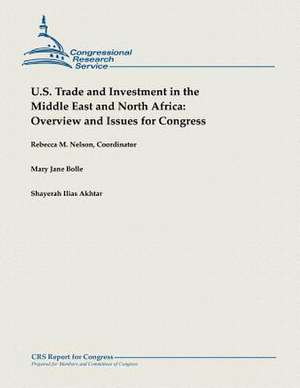U.S. Trade and Investment in the Middle East and North Africa
Autor Rebecca M. Nelson, Mary Jane Bolle, Shayerah Ilias Akhtaren Limba Engleză Paperback
Preț: 101.00 lei
Nou
Puncte Express: 152
Preț estimativ în valută:
19.33€ • 20.06$ • 16.12£
19.33€ • 20.06$ • 16.12£
Carte disponibilă
Livrare economică 01-15 martie
Preluare comenzi: 021 569.72.76
Specificații
ISBN-13: 9781482765106
ISBN-10: 1482765101
Pagini: 48
Dimensiuni: 216 x 279 x 3 mm
Greutate: 0.14 kg
Editura: CREATESPACE
ISBN-10: 1482765101
Pagini: 48
Dimensiuni: 216 x 279 x 3 mm
Greutate: 0.14 kg
Editura: CREATESPACE
